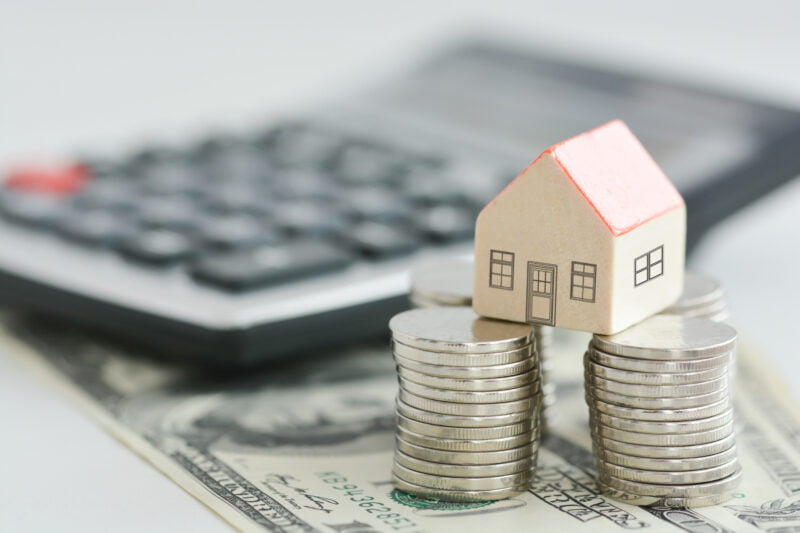Did you know that about 67% of Canadians are homeowners?
Yet, you can’t really start thinking about homeownership without having a solid understanding of how much equity you have in your house or even how equity works. House equity may be defined as the difference between the value of your home and the amount you still owe on your mortgage.
If you need to borrow money, you have the choice of taking out a home equity loan or a home equity line of credit.
Consolidating debt, making house repairs, or funding a remodeling project are all possible uses for the cash. However, it’s critical to recognize the differences between a home equity loan and different lines of credit before taking either one out.
Keep on reading for our full breakdown of the differences between a home equity loan and a HELOC.
What Is Home Equity?
Let’s start with the basics.
Equity in your home serves as security for both home equity loans and home equity line of credit (HELOC).
We’ll assume you’re still making mortgage payments. So, finding out how much equity you have in your property is rather simple. All you need to do is ask your lender how much you still owe on your loan. Then, subtract that amount from the assessed value.
Let’s suppose you had a $300,000 mortgage and paid down $100,000 of it, leaving you with a balance of $200,000 on the principle. Meanwhile, property prices in your area have risen, making your well-maintained home worth $350,000 on the open market.
The equity you have in your home is equal to the assessed value less the outstanding mortgage balance, which comes to $150,000.
With a HELOC or home equity loan, you may only borrow between 75 and 80 percent of the value of your property. It’ll depend on your lender’s lending guidelines.
As a result, they may ask for a lower proportion of equity from you or refuse to provide you any loan at all, even if you have plenty of equity. You can only borrow between $112,500 and $120,000 if you have $150,000 in equity; therefore, continue with the previous scenario.
What Is a Home Equity Loan?
A home equity loan is a one-time, lump-sum loan secured by the equity in your house.
Second mortgages are another term for home equity loans. A home equity loan, like a main mortgage, is backed by the value of your house, which means that if you default on the loan, the lender has the right to take your home.
Home equity loans now have annual percentage rates (APRs) ranging from approximately 3% to as high as 13%.
Most loan interest rates rely on a variety of variables, including your credit score (better scores receive lower rates), your income, and how much money you spend each month on other obligations.
What Is a Home Equity Line of Credit (HELOC)?
If you have a home equity line of credit, you have access to a certain amount of money, known as the credit line or borrowing limit, which you may use to write checks, charge items to your account, or withdraw cash using a special card.
No interest is charged, and no payments are required until you use your credit, and then, similar to a credit card, you may make payments of any amount (as long as you meet a monthly minimum) to pay off the debt as fast or gradually as you can. Your interest rates will increase as time goes by since you’re delaying payment.
There are two distinct stages to the life of a HELOC, which differ from a credit card account. The first phase lasts for the duration of time you use the card and make payments.
The withdrawal period: You may borrow and return the money without any restrictions on the account. With a 10-year loan, you’ll have a grace period before you have to start repaying the principal.
During the payback term, you will be unable to draw money from the credit line and must make good on the debt. In most cases, the loan payback term is 20 years.
The HELOC loan agreement will specify the duration of your draw and payback periods.
Currently, the interest rates on HELOCs vary from as low as 2.5% to as high as 21%, depending on reported market rates. Your interest rate will be determined by a variety of factors, including your credit score, income, and the rules of the lender.
Get a HELOC: Is it a Smart Move?
If you’re expecting large expenditures in the near future, a HELOC may come in handy. Renovating your house, paying for education, or consolidating your debt are some examples.
Five HELOC lenders were contacted, and the ones we spoke with said that tapping home equity depends on your individual financial position but that reduced interest rates today may be an incentive to explore this kind of credit.
People should always be cautious when accessing the home equity they have created in their house, regardless of the market. In order to achieve genuine financial success, people should think about sensible methods that they may use their home equity.
Using a HELOC for debt consolidation may help you save money in the long term by reducing your interest costs. For those who don’t know in advance how much they’ll spend or have continuous expenditures, it makes sense to pay just for what they use, plus interest.
Homeowners who are embarking on major home renovation projects that would need incurring expenses over time prefer to utilize a HELOC since it allows them to borrow money just when they need it.
In this respect, a HELOC is comparable to a credit card, although they often offer interest rates that are considerably lower. Currently, HELOC rates are about 5%, while credit card APRs are over 16%.
Home Equity Loan vs. HELOC: Highlight the Difference
When comparing a HELOC to a home equity line of credit, the most significant distinction is how you receive and repay your loan. Whichever option you choose may be less expensive in terms of interest, depending on how you plan to utilize the borrowed money.
When you take out a home equity loan, you will get your whole loan amount after your application has been accepted.
You will then have a certain number of fixed monthly payments to repay the debt. Repayment durations are usually five to ten years, although they may be as long as twenty or thirty years. You’ll want to use a free loan repayment calculator like this one.
While paying off a loan early may save you money in interest, some lenders impose penalties for paying off debts ahead of time. When using a HELOC, you may save money on interest by making smaller draws and paying down your amounts in between bills.
As with principal and interest costs on the main mortgage, you may be eligible to subtract interest payments for home equity lines of credit and HELOCs when filing federal income taxes. Interest on home equity loans and HELOCs is only deductible if the loan funds are put to good use, such as home renovations, until at least 2026.
You cannot deduct more than $750,000 in interest each year from all of your mortgage, home equity, and HELOC loans.
On the Canadian side, you’ll want to explore the variety of HELOC rates on the market.
Alternative Finance Options
Home equity loans and cash-out refinancing are two more options. Personal loans may also be a possibility for you, based on your current financial situation.
Let’s take a look at what the market has to offer.
Cash-Out Mortgage Refinancing
When you do a cash-out refinancing on your existing mortgage, you take out a larger loan than you now owe and get the difference in cash.
Those who can successfully refinance their mortgages take advantage of the opportunity to use their home equity by doing so.
It’s still going to be more difficult to obtain a cash-out refinance mortgage today than it was before the epidemic, but it’s not as tough as getting a home equity line of credit (HELOC). Due to historically low refinancing rates, a cash-out refinance may be a viable alternative.
Lowering the interest rate, getting some cash, and consolidating your debt gives you more spending money if circumstances become tight.
Personal Loans
Getting the money you need upfront is much easier with a personal loan, which may also be less expensive than using credit cards. Personal loan interest rates, however, vary widely. The primary benefit of taking out a personal loan is the flexibility it provides.
As the credit market tightens, finding lenders may become more difficult. They also need a strong credit history for acceptance.
Loan Options: Simplified
Whenever people think about achieving the American (or Canadian) dream and becoming homeowners, the thought of the complex financial drain that comes attached with homeownership can cast a shadow on their happiness.
Hopefully, our guide has shed some light on the differences between a home equity loan and a HELOC. Now that you have the right foundational knowledge, you can make a well-educated decision.
And, if you liked reading our article, then you’ll love checking out our additional tips and strategies. All of those (and much more) will be available in our real estate and finance sections.




